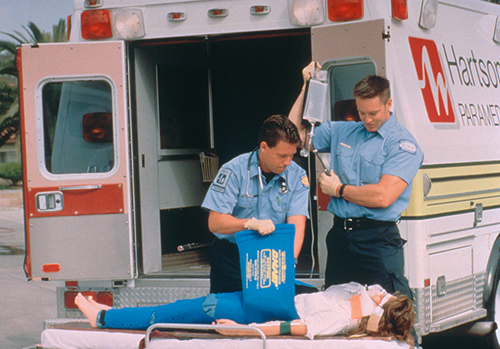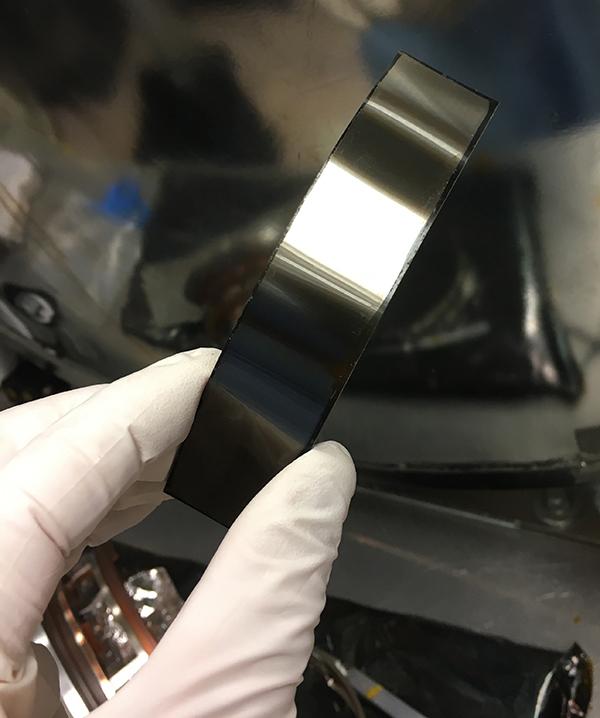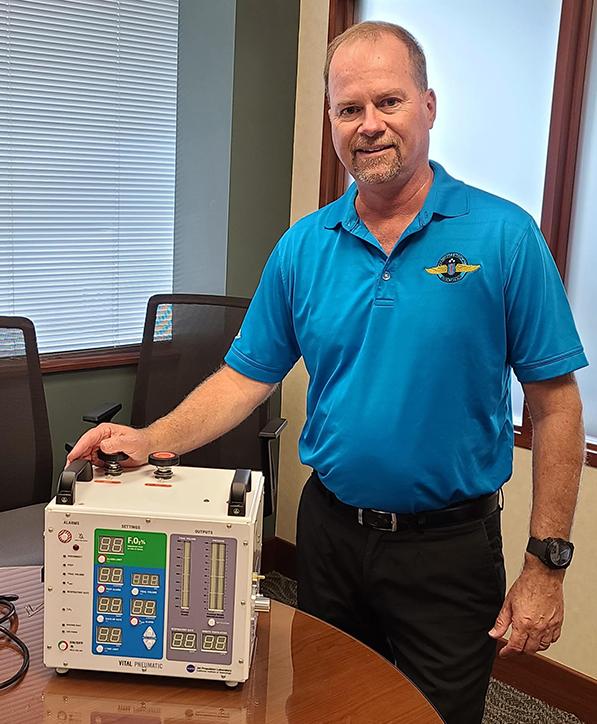Anti-Shock Garment
Incorporating technology from a NASA project of the 1970s, a new type of anti-shock garment for paramedic use essentially reverses the effect of shock on the body's blood distribution. In shock, the brain, heart and lungs may suffer loss of oxygen because blood accumulates in the lower abdomen and legs; the anti-shock garment applies external counterpressure to the legs and abdomen and returns blood to the vital organs, stabilizing body pressure until the patient reaches a hospital.
Known as DMAST (for Dyna Med Anti-Shock Trousers), the garment was developed by Zoex Corporation, Palo Alto, California and it is distributed exclusively by Dyna Med, Carlsbad, California. There are more than 1,000 suits in use.
Unlike other pressure suits, DMAST is non-inflatable, and it employs lower pressures than other pressure garments for flight and emergency uses. Because it is non-inflatable, it has no tubes, bladders or valves, hence no risk of punctures or leaks. Its simple, one-piece design makes application fast (less than 60 seconds) and easy.
DMAST has demonstrated effectiveness in treating shock from trauma induced by natural disasters or military actions, complications of pregnancy, ruptured internal organs, severe allergic reactions, brain injury and pediatric emergencies. In addition to shunting blood from the patient's legs and abdomen to the heart, lungs and brain, the evenly and sequentially applied counterpressures help curb internal bleeding.
The DMAST technology traces its origin back to 1971, when Ames Research Center was developing a prototype pressure suit designed to protect hemophiliac children from bleeding into elbow and knee joints by straightening and compressing the joint until medical attention was available. Lack of funding forced Ames to curtail the project, but Zoex Corporation picked up the development. Sheri Hillenga, one of the Ames team that had worked on the suit, joined Zoex.
Zoex adopted the low pressure approach and, after years of research, developed a garment that worked successfully. The company obtained patents for the suit in 1992 and the following year teamed with Dyna Med, a medical supply catalog company, to market the product. Sheri Hillenga, operating as VMH Visual Communications, assists Zoex in a marketing capacity and conducts public service demonstrations of the anti-shock garment.

Paramedics fit a shock victim with a Dyna-Med anti-shock garment.













